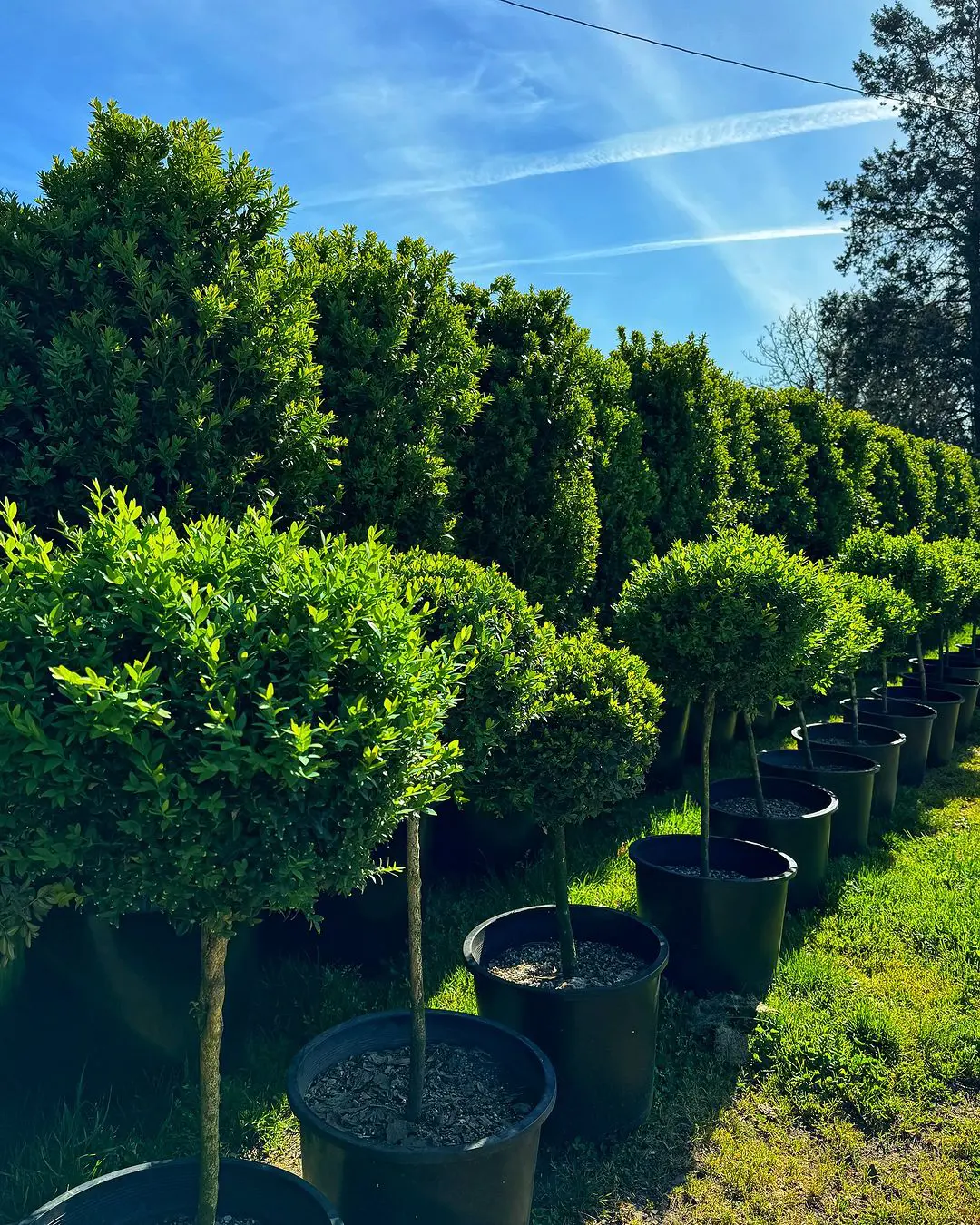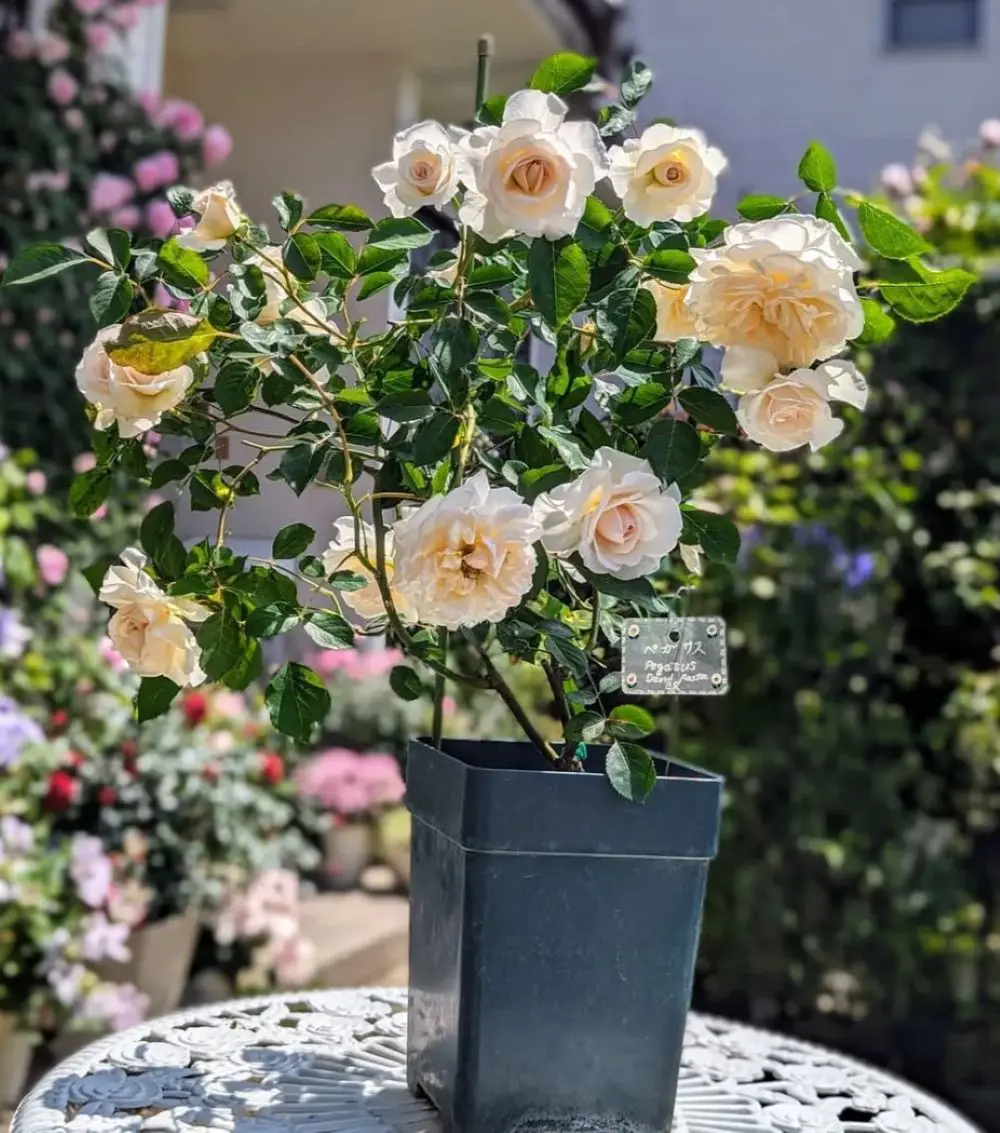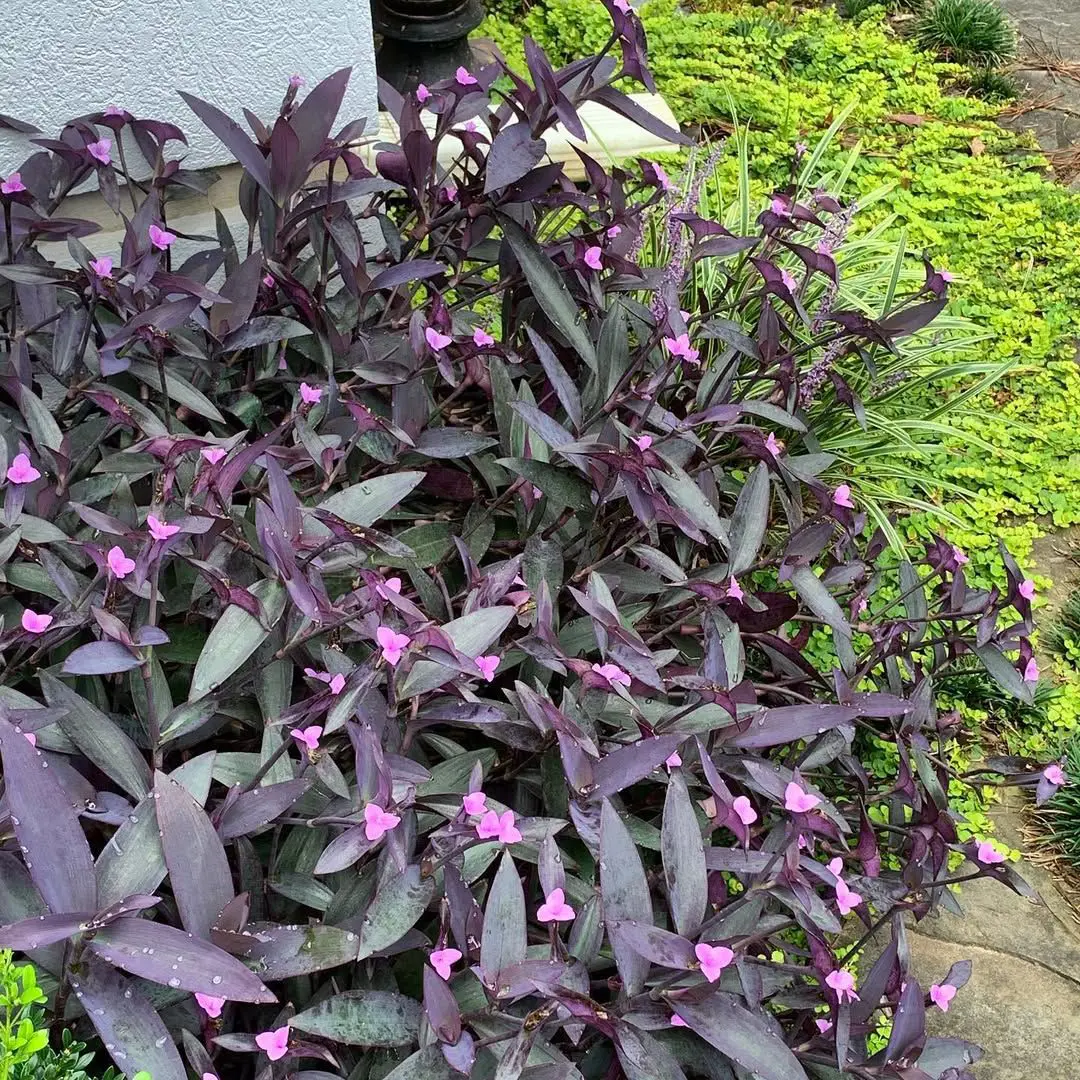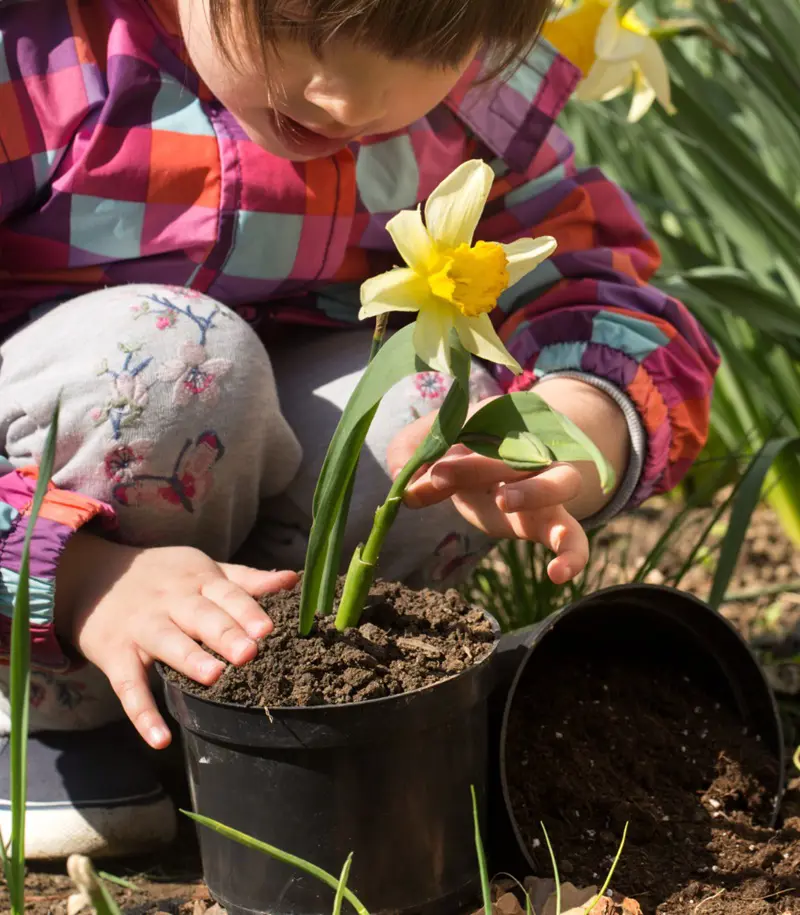Boxwood shrubs are a classic choice for adding structure and elegance to any garden. Known for their dense, evergreen foliage and versatility, these shrubs can be shaped into hedges, topiaries, or stand-alone specimens.
Whether you're a seasoned gardener or just starting, our comprehensive guide will walk you through everything you need to know to successfully grow and care for boxwood shrubs, from selecting the right variety to mastering planting techniques and ongoing maintenance.
Boxwood Shrubs Overview
Boxwoods (Buxus spp.) are a group of about 70 species of flowering plants in the family Buxaceae. These shrubs are native to western and southern Europe, Asia, Africa, Madagascar, northern South America, Central America, Mexico, and the Caribbean.
The most common species used in landscaping are the American boxwood (Buxus sempervirens) and the Japanese boxwood (Buxus microphylla).
Boxwoods are known for their dense, compact growth habit and small, glossy green leaves. They can be used in various garden styles, from formal hedges and topiaries to informal borders and foundation plantings.
Their versatility, combined with their ability to thrive in various climates and soil conditions, makes them a valuable addition to any landscape.
Selecting the Right Boxwood Variety
When choosing a boxwood variety for your garden, consider the following factors:
-
Climate: Different boxwood varieties have varying levels of cold and heat tolerance. For colder climates, American boxwood (Buxus sempervirens) and Korean boxwood (Buxus sinica var. insularis) are good choices. For warmer climates, consider Japanese boxwood (Buxus microphylla) or Littleleaf boxwood (Buxus microphylla var. japonica).
-
Growth Habit: Boxwoods come in a range of growth habits, from low-growing, spreading types to tall, upright varieties. Consider the mature size and shape of the shrub to ensure it fits your landscape design. For example, Dwarf English boxwood (Buxus sempervirens ‘Suffruticosa’) is an excellent choice for small hedges and borders, while American boxwood is ideal for larger hedges and specimen plants.
-
Disease Resistance: Some boxwood varieties are more resistant to common diseases like boxwood blight and leaf spot. For example, Korean boxwood and Japanese boxwood tend to have better disease resistance compared to other varieties.
-
Sun Exposure: Most boxwoods prefer partial shade to full sun, but some varieties are more tolerant of full sun or deep shade than others. Consider the light conditions in your garden when selecting a variety.
Planting Boxwood Shrubs
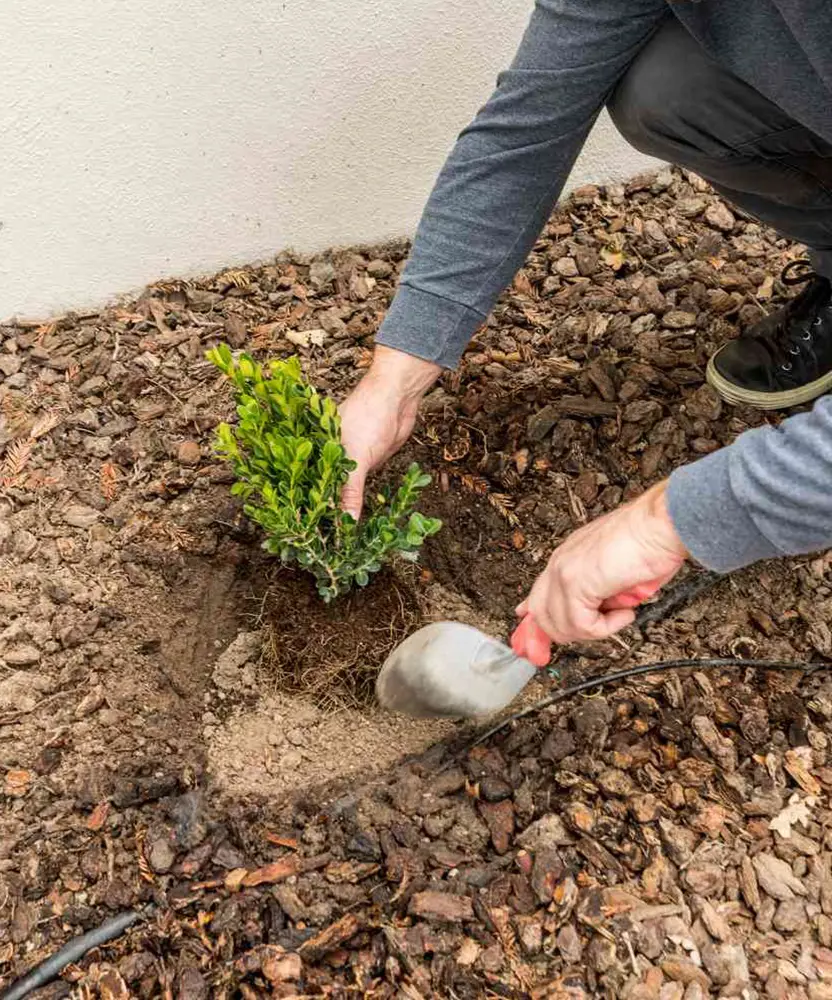
Proper planting is crucial for the health and longevity of boxwood shrubs. Follow these steps to ensure successful planting:
-
Site Selection: Choose a location with well-draining soil and partial to full sun exposure. Boxwoods can tolerate a range of soil types, but they prefer slightly acidic to neutral pH levels (6.0 to 7.5).
-
Soil Preparation: Prepare the planting site by loosening the soil to a depth of 12-15 inches and mixing in organic matter such as compost or aged manure. This will improve soil structure, drainage, and fertility.
-
Planting Hole: Dig a hole that is twice as wide and as deep as the root ball of the boxwood. This allows the roots to spread out and establish themselves more easily.
-
Planting: Place the boxwood in the hole so that the top of the root ball is level with or slightly above the surrounding soil. Backfill the hole with the amended soil, gently firming it around the roots to eliminate air pockets.
-
Watering: Water the newly planted boxwood thoroughly to help settle the soil and establish the roots. Keep the soil consistently moist but not waterlogged during the first growing season.
-
Mulching: Apply a 2-3 inch layer of organic mulch around the base of the plant, keeping it a few inches away from the trunk. Mulch helps retain soil moisture, regulate temperature, and suppress weeds.
Caring for Boxwood Shrubs
Boxwoods are relatively low-maintenance once established, but they do require some care to thrive. Here are the key aspects of boxwood care:
-
Watering: Boxwoods need regular watering, especially during dry periods. Water deeply and infrequently to encourage deep root growth. Avoid overhead watering, as wet foliage can lead to fungal diseases. Instead, use a soaker hose or drip irrigation system.
-
Fertilizing: Boxwoods benefit from annual fertilization in early spring. Use a balanced, slow-release fertilizer formulated for evergreen shrubs. Follow the manufacturer’s instructions for application rates and methods. Avoid over-fertilizing, as this can lead to excessive growth and increased susceptibility to diseases.
-
Winter Protection: In colder climates, boxwoods may require protection from harsh winter conditions. Apply a layer of mulch around the base of the plant to insulate the roots and reduce soil temperature fluctuations. Use burlap or other protective coverings to shield the foliage from drying winds and winter sun.
Pruning Guide for Boxwood Shrubs
-
Timing: Prune your boxwood shrubs in late winter or early spring, before new growth begins. This timing helps the plant recover quickly and promotes healthy new growth.
-
Initial Cleanup: Begin by removing any dead, damaged, or diseased branches. This step is crucial for maintaining the plant's overall health and vigor.
-
Shaping: Carefully shape the shrub according to your desired form. For a formal hedge, trim to achieve a neat, uniform appearance. For a natural, free-form look, trim lightly to maintain the plant's natural shape.
-
Avoid Heavy Pruning: Boxwoods have a slow growth rate, so avoid heavy pruning. Severe cuts may take several seasons to recover, so opt for light, regular trimming instead.
-
Use Clean, Sharp Tools: Always use clean, sharp pruning tools to make precise cuts and prevent the spread of disease.
-
Support New Growth: After pruning, consider applying a balanced fertilizer to encourage new growth and maintain overall plant health.
-
Ongoing Care: Regularly inspect your boxwoods and perform light trimming as needed to keep them in shape. Consistent care and attention to detail will ensure your boxwood shrubs remain lush and well-shaped year-round.
Common Pests and Diseases Affecting Boxwood Shrubs
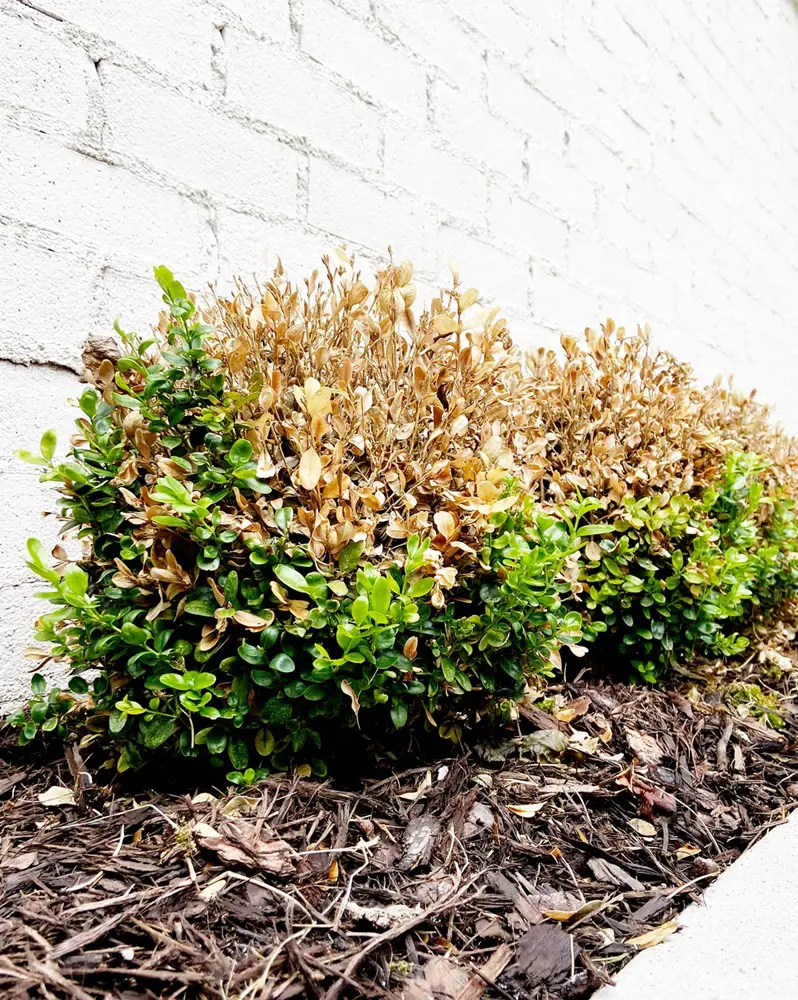
1. Boxwood Blight
- Symptoms: This fungal disease causes leaf spots, stem lesions, and defoliation, leading to severe dieback.
- Solution: Remove and destroy infected plant material. Apply fungicides labeled for boxwood blight prevention. Ensure good air circulation by proper spacing and pruning to reduce humidity around the plants. Avoid overhead watering to keep foliage dry.
2. Boxwood Leafminer
- Symptoms: The larvae create mines within the leaves, causing blisters, yellowing, and eventual leaf drop.
- Solution: Inspect leaves for signs of leafminer activity and prune out infested areas. Use systemic insecticides or insecticidal soap to manage active infestations. Apply treatments in early spring or fall when the larvae are most vulnerable.
3. Volutella Blight
- Symptoms: This disease causes leaf spots, stem cankers, and dieback. Infected areas may appear water-soaked and turn brown.
- Solution: Prune and destroy infected plant parts. Apply fungicides as needed. Improve air circulation and reduce humidity by proper spacing and thinning of the shrubs. Keep the area around the plants clean and free of debris.
4. Boxwood Psyllid
- Symptoms: This pest causes cupping and distortion of new growth, leading to stunted and deformed leaves.
- Solution: Prune and discard affected growth. Use insecticidal soap or horticultural oil in early spring to control young nymphs. Promote plant health with regular care to improve resilience against psyllids.
5. Root Rot
- Symptoms: Caused by poor drainage, root rot results in wilting, yellowing leaves, and eventual plant death.
- Solution: Ensure proper soil drainage and avoid overwatering. Amend soil with organic matter to improve drainage. In severe cases, affected plants may need to be removed and replaced with more tolerant varieties.
6. Boxwood Spider Mites
- Symptoms: These tiny pests cause stippling, yellowing, and fine webbing on the undersides of leaves.
- Solution: Regularly inspect plants for mites and spray affected areas with water to dislodge them. Use miticides or insecticidal soap if infestations are severe. Promote beneficial insects like ladybugs to help control mite populations.
7. Leaf Spot
- Symptoms: Various fungi cause dark, circular spots on leaves, leading to premature leaf drop and weakened plants.
- Solution: Remove and dispose of infected leaves. Apply fungicides as necessary, following label instructions. Maintain good air circulation and avoid overhead watering to minimize moisture on the foliage.
Boxwood Landscaping Ideas
Boxwoods are incredibly versatile and can be used in a variety of landscaping designs. Here are some ideas to inspire you:
-
Formal Hedges: Boxwoods are perfect for creating formal hedges and borders. Their dense, compact growth habit makes them ideal for clipping into clean, precise shapes.
-
Topiary: With their small leaves and slow growth rate, boxwoods are excellent candidates for topiary. Create intricate shapes, animal figures, or simple geometric forms to add visual interest to your garden.
-
Foundation Plantings: Use boxwoods to soften the edges of your home and create a cohesive landscape design. Plant them in groups or as individual specimens to provide year-round greenery.
-
Parterres and Knot Gardens: Boxwoods have been used for centuries in traditional parterres and knot gardens. Their dense foliage and ability to be pruned into intricate patterns make them ideal for these formal garden styles.
-
Container Gardens: Boxwoods grow well in containers, making them a versatile option for patios, balconies, and other small spaces. Use them as focal points, accents, or seasonal displays.
Propagating Boxwood Shrubs
Propagating boxwoods is a cost-effective way to expand your garden. Boxwoods can be propagated from cuttings or by layering. Here’s how:
-
Cuttings:
- Take semi-hardwood cuttings in late summer or early fall. Cut 4-6 inch sections from healthy, disease-free branches.
- Remove the lower leaves and dip the cut end in rooting hormone.
- Plant the cuttings in a well-draining, sterile rooting medium (such as a mix of peat and perlite).
- Keep the cuttings in a humid environment, out of direct sunlight, until roots develop (usually 6-8 weeks).
- Once rooted, transplant the cuttings into individual pots and gradually acclimate them to outdoor conditions before planting them in the garden.
-
Layering:
- Select a low-growing branch and bend it to the ground.
- Make a small cut or wound in the underside of the branch where it touches the soil.
- Secure the wounded section to the ground with a U-shaped pin or wire.
- Cover the wounded section with soil, leaving the tip of the branch exposed.
- Keep the soil moist until roots develop (usually 6-12 months).
- Once rooted, sever the new plant from the parent and transplant it to its desired location.
Seasonal Care Calendar for Boxwood Shrubs
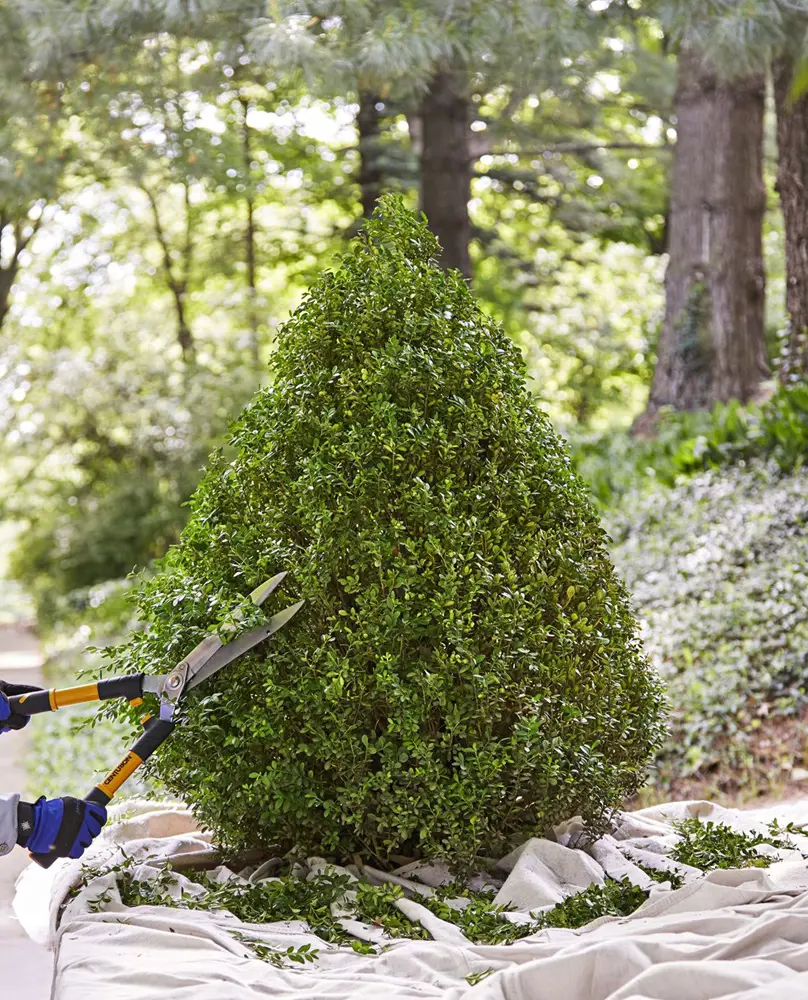
To keep your boxwood shrubs healthy and looking their best, follow this seasonal care calendar:
-
Spring:
- Prune boxwoods before new growth begins.
- Apply a balanced, slow-release fertilizer.
- Inspect for pests and diseases and treat as needed.
- Water regularly as the weather warms up.
-
Summer:
- Continue regular watering, especially during dry spells.
- Monitor for pests and diseases, particularly boxwood leafminer and leaf spot.
- Avoid heavy pruning during hot weather to prevent stress.
-
Fall:
- Take cuttings for propagation.
- Water deeply before the ground freezes to prevent winter burn.
- Apply mulch around the base of the plant to insulate the roots.
-
Winter:
- Protect boxwoods from harsh winter conditions with burlap or other coverings.
- Inspect for signs of winter damage and address any issues promptly.
- Avoid heavy foot traffic around boxwoods to prevent soil compaction and root damage.
FAQs
1. What is the best time of year to plant boxwood shrubs?
The best time to plant boxwood shrubs is in the early spring or early fall. Planting in early spring allows the shrubs to establish their root systems before the heat of summer, while early fall planting gives them time to settle in before winter.
Avoid planting during the hottest part of summer or the coldest part of winter to reduce stress on the plants.
2. How often should I water my boxwood shrubs?
Boxwood shrubs need consistent moisture, especially during their first year after planting. Water deeply once a week during dry periods, ensuring the soil is moist but not waterlogged.
Mature boxwoods are more drought-tolerant but still benefit from regular watering during extended dry spells. Using mulch around the base can help retain soil moisture and reduce the need for frequent watering.
3. What type of fertilizer should I use for boxwood shrubs, and when should I apply it?
Use a balanced, slow-release fertilizer formulated for evergreen shrubs. Apply the fertilizer in early spring as new growth begins. Follow the manufacturer’s instructions for the correct application rate.
Avoid over-fertilizing, as this can cause excessive growth and increase the risk of disease. A second, lighter application in mid-summer can also be beneficial, but is not always necessary.
4. How do I prevent and treat common diseases in boxwood shrubs?
To prevent diseases like boxwood blight and root rot, ensure good air circulation around the plants, avoid overhead watering, and plant in well-draining soil. Regularly inspect your shrubs for signs of disease, such as leaf spots or wilting.
If you detect a problem, remove and dispose of affected plant material promptly. Fungicides can be used as a preventive measure or to treat existing infections, but always follow the label instructions carefully.
5. How can I protect my boxwood shrubs from winter damage?
To protect boxwood shrubs from winter damage, water them thoroughly before the ground freezes to help prevent desiccation. Apply a layer of mulch around the base to insulate the roots and moderate soil temperature fluctuations.
In areas with harsh winters, consider using burlap or other protective coverings to shield the foliage from drying winds and winter sun. Avoid using rock salt or other de-icing products near boxwoods, as these can cause damage to the plants.
